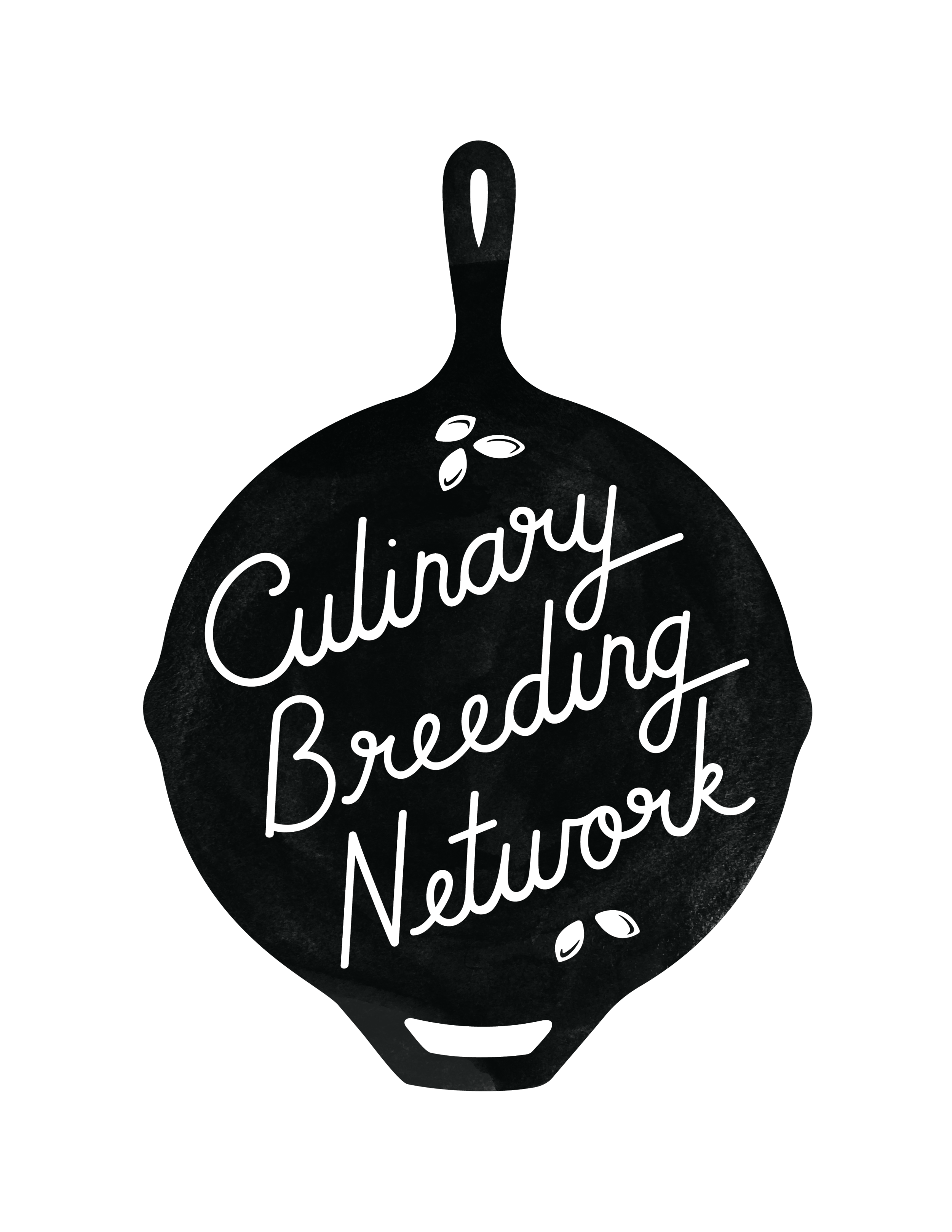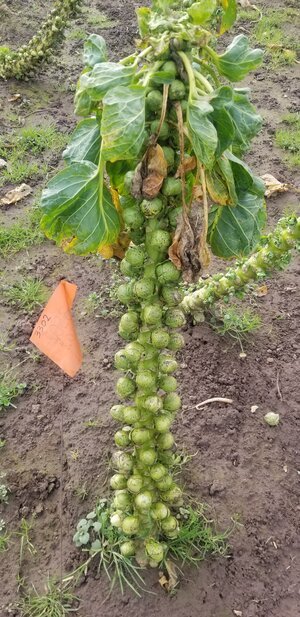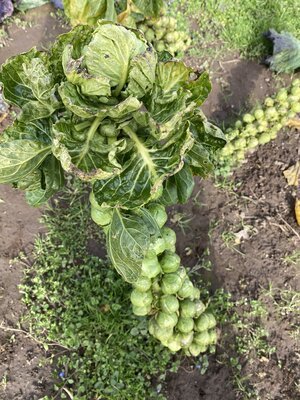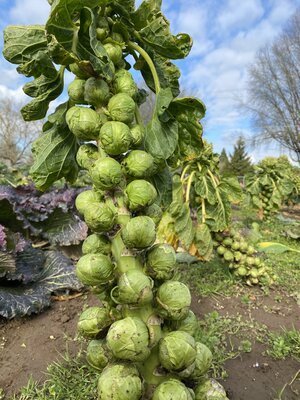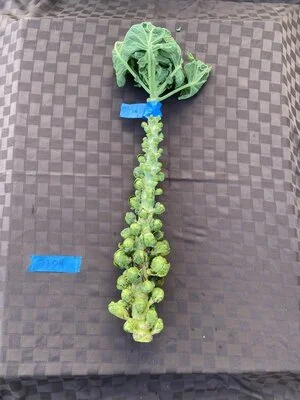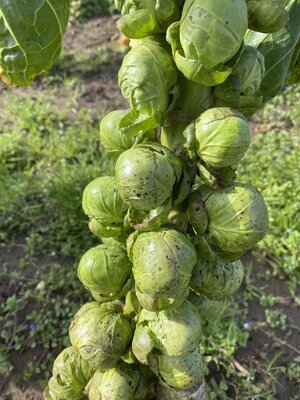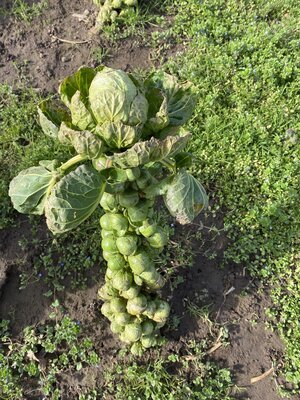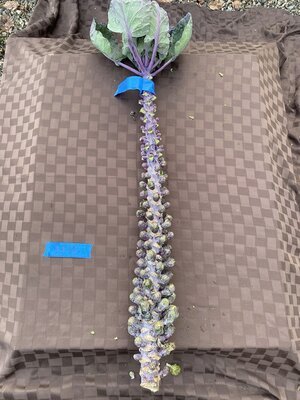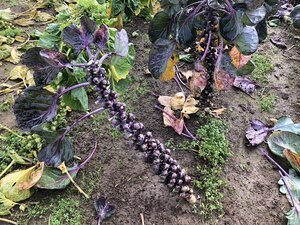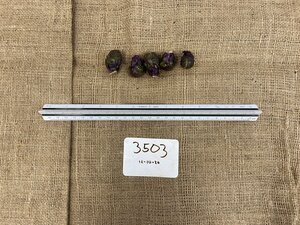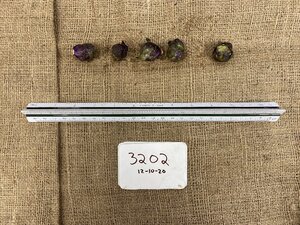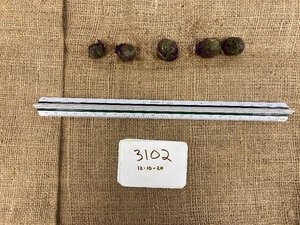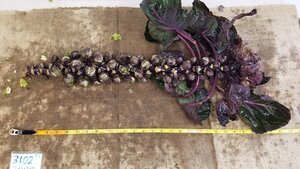Brussel Sprout Variety Information
Cryptus
A Syngenta hybrid that boasts clubroot resistance - a common disease of brassica crops here in the Pacific Northwest.
evenly sized green sprouts
2-3’ stalks with well-spaced sprouts for easy harvest
When to Find: November - February
Diablo
A Dutch hybrid we sourced from Johnny’s Selected Seeds, although there are other US vendors.
tight sprouts especially early harvests
shorter, but densely packed stalks
When to Find: November - February
Divino (F1)
A Bejo hybrid we sourced from Territorial Seeds, although there are other US vendors.
tightly wrapped, dense green sprouts
2-3’ stalks with well-spaced sprouts for easy harvest
stores well, versatile in the kitchen
When to Find: November - February
Chef Tim Wastell’s Tasting Notes:
“In short: Vibrant and emerald green ‘Divino’ Brussels sprouts provide a well-rounded and classic flavor. Versatile. Mildly sweet with unwaveringly crisp-textured raw leaves, is is especially delicious and sturdy when roasted at high heat”
“The mildly sweet taste and sturdy, crisp texture shined as a beautiful canvas for lightly dressed winter salads using the separated whole leaves as opposed to shredded slaw types. Try generous amounts of roasted garlic, tahini , and apple cider vinegar, or lightly blanched and quartered sprouts for chunky chopped-type salads”
“Divino is very receptive to high/direct heat and roasts very well both on and off of the stalk, taking on plenty of deep caramelization and crisp outer edges while retaining its toothy texture before becoming slimy or overcooked”
Nautic (F1)
A Bejo hybrid we sourced from Osborne Seeds, although there are other US vendors.
good quality, large, green sprouts
3’ stalks with well-spaced sprouts for easy harvest
Easy-to-use in the kitchen
When to Find: November - February
Chef Tim Wastell’s Tasting Notes:
“Large, almost shiny deep green sprouts with wonderfully full flavor and textural possibilities. Easy and adaptable in the kitchen”
“Nautic’s abundantly large sprouts make knife work very easy and time efficient. From trimming and halving, to providing a much less stressful than usual run through a sharp mandoline, sprouts of this size and density are a time and potential finger saver in home and professional kitchens”
“Slaw or whole leaf style salads of Nautic take best to assertive flavors (i.e. creamy dressings, mustards, bleu cheese, toasted nuts, etc.) and come together quickly”
“Nautic lends itself very well to both high/direct heat and low/slow cooking methods. Pan roasting and wood oven cookery provided caramelized sweetness that needs just a drizzle of oil, some Espelette pepper, and a squeeze of lemon”
Basket steaming with aromatics such as bay leaf and thyme resulted in tender yet toothsome sprouts that needed little more than flaky sea salt to show off Nautic’s subtle piquancy, while braising the sprouts whole in light chicken stock and finishing with roasted sesame yielded an exceptionally savory and meltingly tender accompaniment to a crisp roasted bird.”
Redarling (F1)
A Syngenta hybrid we sourced from Osborne Seeds, although there are other US vendors.
small, but tightly wrapped red-purple sprouts
2-3’ stalks with dense sprouts
When to Find: November - February
Chef Tim Wastell’s Tasting Notes:
“Resplendently beautiful in glowing shades of purple, ‘Redarling’ Brussels sprouts produced reliably sweet, balanced, slightly ovular, densely packed buttons with seemingly unlimited culinary potential.”
“Raw and light cooking applications of ‘Redarling’ were widely successful due to balanced flavor (mildly piquant meets above average sweetness), crisp yet tender texture and very good color retention. Raw and shredded sprouts were beautiful in salads, providing a faintly sweet baseline that can stand up to bold flavors and textures ranging from light citronette/vinaigrette to full-bodied dairy or nut based dressings.”
“Aggressively roasting whole sprouts either ‘on the bone’ (stalk) or off resulted in deeply savory, sweetly caramelized buttons that despite losing a bit of bright color, needed little more than good salt and a tiny touch of oil. In a trade of vibrant color for exceptional flavor, Redarling shines when cooked very simply: cut side down in cast iron until brown and crispy, then flipping to barely kiss the top side before serving. Frying quartered Redarling sprouts produced an addictive ‘brassica popcorn’ canvas for flavor combinations from fish sauce caramel with lime to nutritional yeast and Aleppo pepper.”
